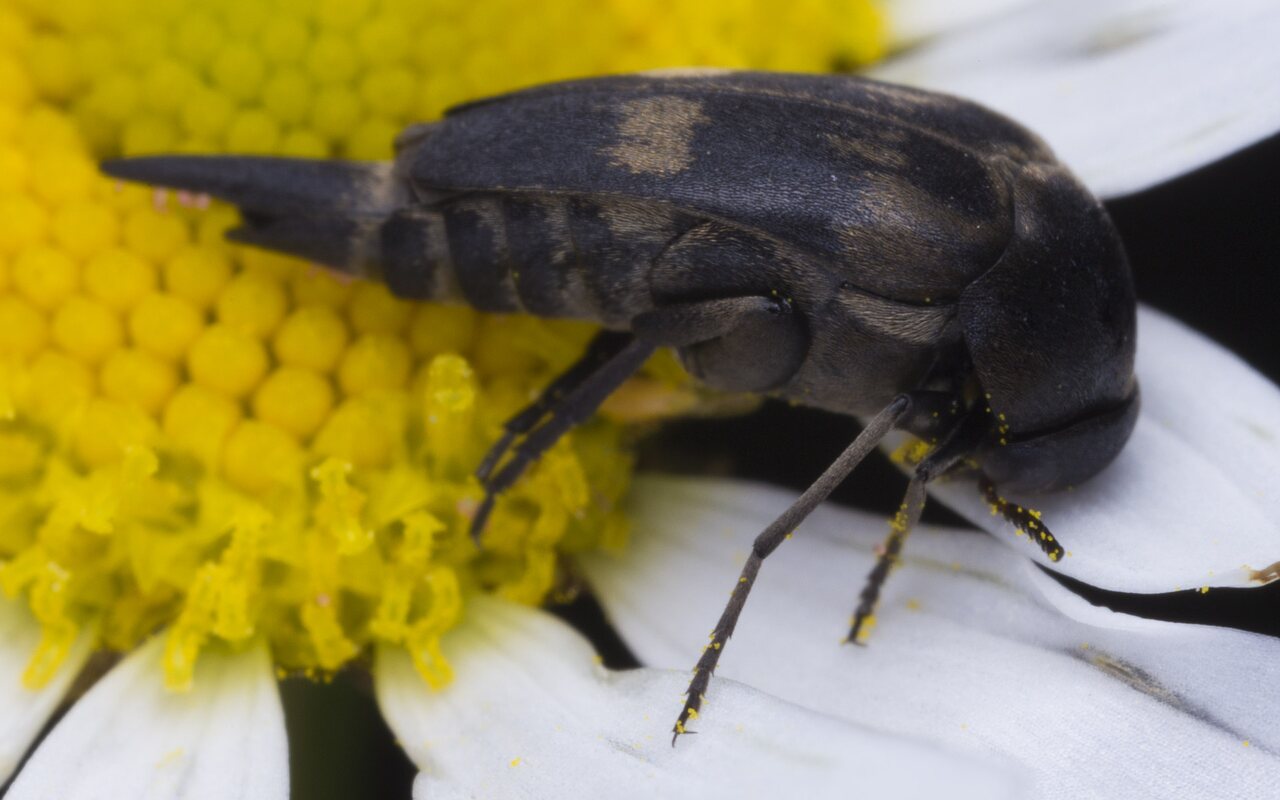
Variimorda villosa · paprastasis dygliavabalis
- Variimorda fasciata, Mordella fasciata
- Gebänderter Stachelkäfer
- vyösyöksykäs
- paprastasis dygliavabalis
- schylik przepaskowiec
- varierad tornbagge
The species is widespread in Europe and lives far east into Russia and Kazakhstan, into the Caucasus and Asia Minor as far as Iran. In Europe it is absent in the far north, in some parts of the Mediterranean region and in Ireland. The adults can be encountered from July through August, especially feeding on flowers of Apiaceae species. Their bodies have a sharp rear ending and a quite variable pattern of colours of lighter spots (yellowish, brownish, silvery, etc.). Sometimes these are missing and the elytra look dark and uniform, sometimes they are completely covered in silver-grey hairs. First antennal segments orange. Base of pygidium with a wide light band. The body length is 5.5–9 mm. The small larvae develop in rotten poplars and willows.
‥
0 comments
Add a comment